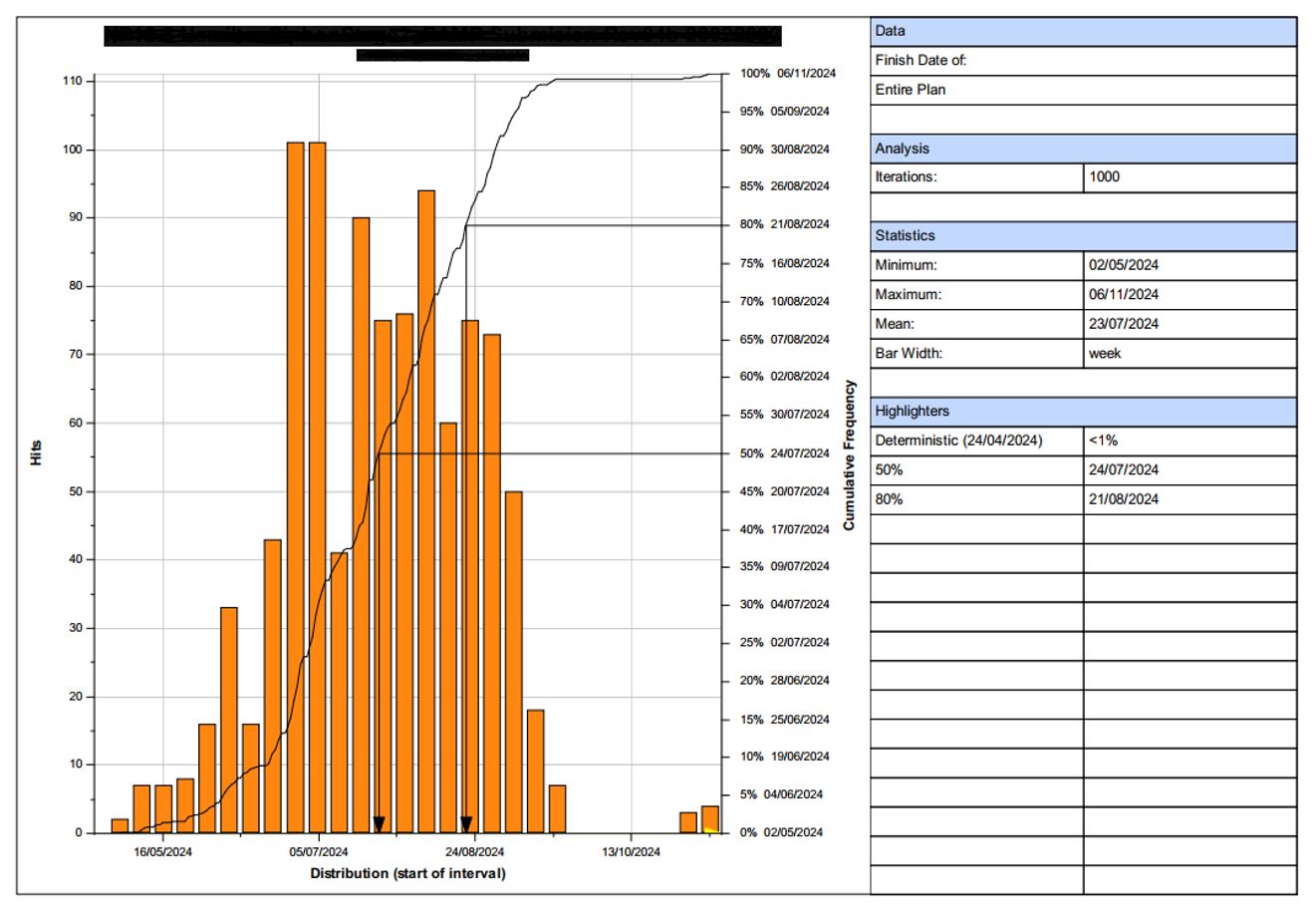Anvelo provide a multitude of services, one service offering is active risk management, pre contract award right through to the project completion. We find with any parties to a contract, their goal is to finish a project on time, within budget, quality product or service and ultimately safely. Generally, risk management provides early prevention and a framework for issues resolution in a collaborative fashion. If the parties have a collaborative mindset, it can save a lot of time, money and provide the desired outcome. We set out how we assist both clients and contractors in achieving those goals.
Abrahamson Principles
The Principles of Risk Allocation were developed by Max Abrahamson (Abrahamson Principles). The principles were to provide a framework for allocating risks between different parties in a contract, these principles are summarised as:
- Principle of Indemnity: States that the party who is responsible for a risk should be the one to bear the financial consequences of that risk.
- Principle of Insurability: Suggests that parties should allocate risks to the party who is best able to obtain insurance coverage for that risk.
- Principle of Contribution: Requires parties to contribute to the loss proportionate to their degree of responsibility for the risk.
- Principle of Risk Assumption: States that risks should be allocated to the party who is best able to manage that risk.
- Principle of Prevention and Precaution: Requires parties to take reasonable measures to prevent or mitigate the risk.
- Principle of Equitable Allocation: Requires parties to allocate risks fairly and reasonably between themselves.
Risk Allocation/Appetite
One of the contentious elements of risk management is naturally the allocation. Risk allocation is the process of determining how risks will be assigned or distributed among the parties involved in a contract or project. The goal of risk allocation is to ensure that the risks are assigned to the party that is best able to manage them and bear the financial consequences of any negative outcomes.
Risk allocation is usually aligned to an organisations risk appetite statement (if there is one). Risk appetite refers to an organisation’s willingness to take on risk in pursuit of its objectives. It is the level of risk that an organisation is willing to accept or tolerate in order to achieve its goals. Risk appetite is influenced by various factors, such as an organisation’s culture, business strategy, financial resources, and risk management capabilities. Bearing in mind due to the integrated nature of construction and infrastructure sectors it should be noted, the pursuit of the project objectives should not be compromised by the risk appetite as it can eventually lead to exceeding the original “risk appetite”, such as liquidation or insolvencies.
Schedule Risk Analysis
How we overcome the mechanics of the risk allocation is collaboration. As part of the process, schedule risk analysis (SRA) is a technique used in project management to assess the likelihood of a project being completed on time.
- Deterministic analyses, producing single fixed results, or
- Probabilistic analyses, producing a range of results.
Which involves:
- Identifying potential risks: The first step is to identify potential risks that could impact the project schedule. These risks could be related to resource availability, technical issues, external factors, force majeure, or other project-specific factors. The best way to identify potential risks is through meetings and collaborative workshops with all the involved stakeholders to brainstorm and come up with all the potential risks.
- Assess the probability and impact of risks: Once the potential risks have been identified, the next step, to be carried through the same communication techniques, is to assess their probability and impact. This involves evaluating the likelihood that the risk will occur and the potential impact it could have on the project schedule.
- Develop a risk management plan: Based on the probability and impact of the identified risks, a risk management plan is developed to address each risk. The plan should outline strategies for mitigating, avoiding, or transferring the risk.
- Incorporate the risk management plan into the project schedule: The final process incorporating the risks into the project schedule to reflect the potential impact of the identified risks. This helps to create a more realistic project timeline and helps the project team to better manage potential schedule delays.
- Results transparency: Once the results of the SRA have been clearly depicted, the responsible owner and allocation of the risk to that owner is a very important final stage.
Transparency of Results
The risk facilitator or risk manager should maintain integrity and transparency throughout the whole process to provide the project team with actual results and an accurate forecasted project delivery date and cost. The transparency can be achieved practically through the following steps:
- Clear communication: Risk management team should communicate project results clearly and effectively to the project management team, using language that is easily understandable to all stakeholders and through the most effective communication methods/tools. This includes sharing progress reports, updates, and summaries that highlight the project’s outcomes, successes, and challenges.
- Data sharing: They should make project data and information available to stakeholders as appropriate, using data visualisation tools to help stakeholders understand the data and its implications. We find the categorisation of risks can assist with transparency between the parties.
- Feedback mechanisms: They should establish mechanisms for stakeholders to provide feedback on project results, such as surveys, focus groups, or public forums.
- Independent evaluation: An independent evaluation of project results can enhance transparency by providing an unbiased assessment of the project’s outcomes and impact.
Integrated Risk (Time & Cost)
Integrating all the previously presented processes will lead to the risk analysis. A key aspect of integrated risk management is the use of risk analysis techniques, such as Monte Carlo simulation, to assess the potential impact of risks on project time and cost. These techniques allow project managers to model different scenarios and assess the likelihood of each scenario occurring, as well as the potential impact on project time and cost.
Another important aspect of integrated risk management is the development of a risk response plan that outlines specific strategies for managing identified risks. This plan should include contingency plans for potential schedule delays or cost overruns, as well as strategies for mitigating risks to minimise their impact on the project.
Contractual Clauses to Assist, Not Prevent Collaboration
Contractual clauses that assist rather than prevent collaboration are designed to facilitate collaboration and cooperation between parties in a contract. These clauses can help to build trust, promote teamwork, and enhance project outcomes by creating a framework for effective communication and joint decision-making.
Some examples of contractual clauses that assist collaboration include:
- Joint project management: This clause can be included in a contract to establish a joint project management structure, where representatives from both parties collaborate to oversee the project and make joint decisions. This will not only mitigate dispute resolution but also streamline roadblocks and provide an active risk management framework.
- Communication protocols: Establishing clear communication protocols, such as regular meetings or progress updates, to ensure that both parties are informed and engaged throughout the project, governance protocols or similar is key to ensure clear communication. A “notice of potential issue”, should not be deemed as a negative, in fact positive for ultimate project outcomes.
- Dispute/Issue resolution: Contracts can include clauses that establish a collaborative dispute resolution process, such as Executive Leadership Teams (ELT) or similar to ultimately encourage parties to work together to resolve conflicts rather than resorting to other forms of alternative dispute resolution mechanisms or litigation.
- Incentives for collaboration: Contracts can include clauses that incentivise collaboration, such as performance bonuses or rewards for achieving joint project goals.
Assessment of Events Made Easier
Considering the circumstances and the validity in the current construction and infrastructure market it is vital to:
- Test the operation of clauses prior to signing. Specifically, an extension of time or compensation event clause, does it actually work?
- Clear mechanism for draw down on the risk allowance. For example, escalation risk is specifically expressed at 5%, if it exceeds the principal can make a distinct abatement for the original allowance. The modification is very transactional. Drawdown mechanisms can also be used in risk allocation by providing project financiers with greater control over the disbursement of funds, enabling them to monitor project progress and ensure that funds are being used for their intended purpose.
- Risk monitoring and review: Risk management is an ongoing process, and risks should be continually monitored and reviewed to ensure that they are effectively managed. This involves tracking risk events and reviewing risk mitigation strategies to ensure that they remain relevant and effective.
Summary
At Anvelo, we have a set of experienced staff supported by academic and digital resources to provide a high-quality, reliable risk management services for construction projects. Our team of experts specialise in identifying and mitigating potential risks, ensuring a safe and successful completion of projects, analysing the integrated time/cost risk and estimating the influenced duration and additional expected cost. At Anvelo, we are committed to delivering exceptional results and providing peace of mind to our clients. With our expertise and experience, we can help you manage risk and achieve your construction goals.
Contact us today to see what we can do for you.




